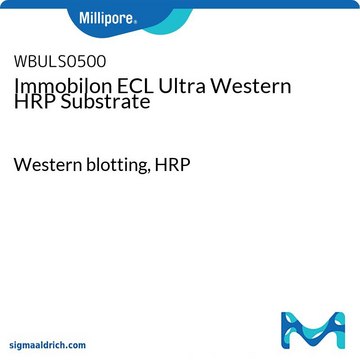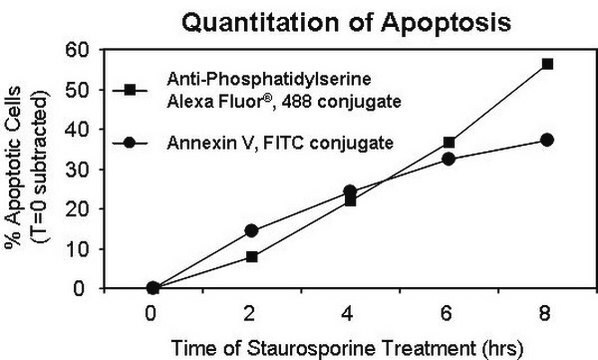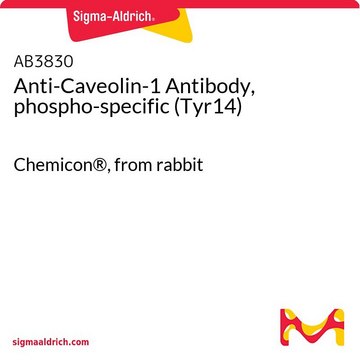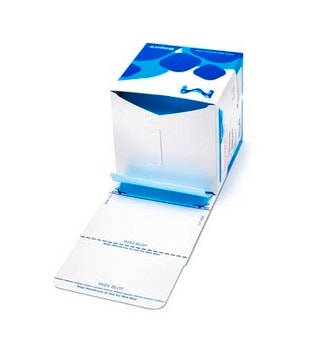05-480
Anti-Eck/EphA2 Antibody, clone D7
clone D7, Upstate®, from mouse
Sinonimo/i:
EPH receptor A2, Epithelial cell kinase, Tyrosine-protein kinase receptor ECK, ephrin receptor EphA2, epithelial cell receptor protein tyrosine kinase, protein tyrosine kinase, receptor protein tyrosine kinase regulated by p53 and E2F-1
About This Item
Prodotti consigliati
Origine biologica
mouse
Livello qualitativo
Forma dell’anticorpo
purified immunoglobulin
Tipo di anticorpo
primary antibodies
Clone
D7, monoclonal
Reattività contro le specie
mouse, canine, human, rat, bovine
Produttore/marchio commerciale
Upstate®
tecniche
activity assay: suitable
immunocytochemistry: suitable
immunoprecipitation (IP): suitable
western blot: suitable
Isotipo
IgG1
N° accesso NCBI
N° accesso UniProt
Condizioni di spedizione
dry ice
modifica post-traduzionali bersaglio
unmodified
Informazioni sul gene
bovine ... Epha2(512798)
human ... EPHA2(1969)
Descrizione generale
Protein kinases are enzymes that transfer a phosphate group from a phosphate donor, generally the g phosphate of ATP, onto an acceptor amino acid in a substrate protein. By this basic mechanism, protein kinases mediate most of the signal transduction in eukaryotic cells, regulating cellular metabolism, transcription, cell cycle progression, cytoskeletal rearrangement and cell movement, apoptosis, and differentiation.
Specificità
Immunogeno
Applicazioni
A previous lot of this antibody has been reported to have been used in an immunoprecipitation autophosphorylation assay, using a Mn-PIPES reaction buffer (Romer, L., 1994).
Immunoprecipitation:
A previous lot of this antibody has been reported to immunoprecipitate Eck from 500 µg of a human breast epithelial cell line which had been lysed in TBS containing 1% Triton X-100. Use 1-4 µg per reaction.
Immunocytochemistry:
A previous lot of this antibody has been reported to immunostain Eck in human, mouse and rat epithelial cells fixed with 3.7% formaldehyde solution and permeabilized with 0.5% Triton X-100 in TBS.
Neuroscience
Growth Cones & Axon Guidance
Qualità
Western Blot Analysis:
0.5-2 µg/mL of this lot detected Eck in RIPA lysates from human A431 and previously from foreskin fibroblasts, murine 3T3/A31 and rat L6 cells.
Descrizione del bersaglio
Stato fisico
Stoccaggio e stabilità
Handling Recommendations:
Upon receipt, and prior to removing the cap, centrifuge the vial and gently mix the solution. Aliquot into microcentrifuge tubes and store at -20°C. Avoid repeated freeze/thaw cycles, which may damage IgG and affect product performance. NOTE: Variability in freezer temperatures below -20°C may cause glycerol-containing solutions to become frozen during storage.
Risultati analitici
Positive Antigen Control: Catalog #12-301, non-stimulated A431 cell lysate. Add 2.5µL of 2-mercaptoethanol/100µL of lysate and boil for 5 minutes to reduce the preparation. Load 20µg of reduced lysate per lane for minigels.
Altre note
Note legali
Esclusione di responsabilità
Non trovi il prodotto giusto?
Prova il nostro Motore di ricerca dei prodotti.
Codice della classe di stoccaggio
10 - Combustible liquids
Classe di pericolosità dell'acqua (WGK)
WGK 1
Certificati d'analisi (COA)
Cerca il Certificati d'analisi (COA) digitando il numero di lotto/batch corrispondente. I numeri di lotto o di batch sono stampati sull'etichetta dei prodotti dopo la parola ‘Lotto’ o ‘Batch’.
Possiedi già questo prodotto?
I documenti relativi ai prodotti acquistati recentemente sono disponibili nell’Archivio dei documenti.
Il team dei nostri ricercatori vanta grande esperienza in tutte le aree della ricerca quali Life Science, scienza dei materiali, sintesi chimica, cromatografia, discipline analitiche, ecc..
Contatta l'Assistenza Tecnica.








